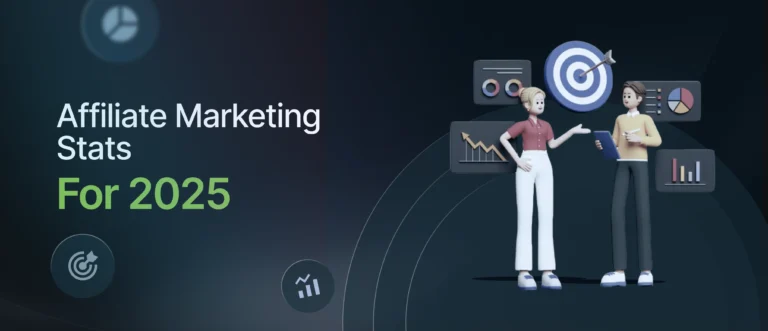Building a Passive Income Through Freelancing: Real Stories and Practical Advice
Freelancing has become a popular way to earn money, but for many, it can feel like a full-time job with active hours spent on every project. However, the real appeal of freelancing lies in the potential to build passive income. This article dives into how you can develop a sustainable source of passive income through freelancing, including real stories from successful freelancers and practical advice to help you along the way.
Understanding Passive Income in Freelancing
Passive income is money that continues to come in without you actively working for it all the time. For freelancers, this might sound impossible at first because freelancing is traditionally linked with “active” work—getting paid per project or hourly. However, by setting up streams that continue to pay even when you’re not working, passive income is very achievable.
The key to building passive income as a freelancer is finding ways to automate your income sources. This might mean creating digital products, offering long-term services, or tapping into affiliate marketing. Once you’ve set up these income sources, they can continue to generate earnings while you focus on other aspects of your business or personal life.
Real Stories of Freelancers Who Built Passive Income
One of the best ways to understand the potential of passive income through freelancing is to hear from those who’ve done it. Meet Sarah, a graphic designer who started by taking on traditional client projects but quickly found herself overwhelmed with the amount of active work. After a couple of years, Sarah began selling design templates and printables online. These products, once created, could be sold over and over, bringing in consistent income without any extra effort.
Another story comes from James, a freelance writer who found success by writing eBooks and guides. Rather than constantly searching for new clients, James started publishing his work on platforms like Amazon, where he could earn royalties every time someone bought one of his books. By diversifying his income streams, James was able to achieve more financial freedom and reduce the strain of client work.
The Importance of Diversification in Freelancing
Diversification is one of the most effective ways to build a solid passive income. Relying on a single client or one source of income can be risky, especially when the market fluctuates. As a freelancer, it’s essential to spread your efforts across multiple income streams. These could include freelancing services, digital products, affiliate marketing, and even income from your own online courses.
For instance, an illustrator may start by offering commissioned art, but over time, they could develop digital downloads of their artwork, offer paid subscriptions on platforms like Patreon, and even teach other aspiring artists through online tutorials. By diversifying, freelancers can build a more resilient income model that doesn’t depend on any one avenue.
How to Identify Opportunities for Passive Income
Knowing where to start when seeking passive income opportunities is key. Think about what you’re already good at and how it can be turned into a product or service that generates income on its own. If you’re a web designer, consider creating pre-built website templates or offering website maintenance packages that require minimal ongoing work.
For writers, passive income might come from repurposing content. For example, a blog post could be turned into an eBook, or a series of articles could become an online course. Understanding what your skills can be transformed into is the first step in building a sustainable income stream that doesn’t require you to be constantly working.
Starting Small: The Key to Growing Your Passive Income
Building passive income doesn’t happen overnight, and it’s important to start small. Begin with something manageable, like selling a digital product or offering a low-maintenance service. As you become more comfortable with the process, you can scale up, expand your offerings, or automate tasks that eat up your time.
Starting small also allows you to test the waters without too much risk. For example, you could test a small eBook on Amazon before deciding to create a full-scale course or membership program. By building up gradually, you can learn from your experiences and fine-tune your strategies as you go.
The Power of Digital Products in Freelancing
One of the most effective ways to generate passive income as a freelancer is through digital products. These can include everything from eBooks, guides, printables, and online courses to stock photos, design templates, and even music tracks. The beauty of digital products is that, once created, they can be sold repeatedly without requiring constant involvement from you.
For example, a freelance photographer could sell stock images or photo presets on a platform like Etsy or Creative Market. A freelance writer might create a downloadable guide on how to write compelling blog posts and sell it on their website. Digital products not only allow freelancers to create income while they sleep but also provide a scalable business model.
Building a Strong Online Presence
To create passive income streams, freelancers need to build a strong online presence. Having a website or portfolio that showcases your work is crucial for attracting clients, but it’s also important for establishing your digital product sales. Social media is another powerful tool for promoting your products and services, engaging with your audience, and creating a loyal following.
Consider leveraging platforms like Instagram, Twitter, LinkedIn, or YouTube to share your expertise, promote your work, and direct followers to your website. A solid online presence increases your visibility and credibility, making it easier for potential customers or clients to find and trust you.
Using Automation to Scale Your Freelance Income
Automation is another way to turn your freelancing business into a passive income generator. There are many tools available that can help you automate tasks such as client management, invoicing, social media posting, and even email marketing. By streamlining these processes, you can free up more time to focus on creating content or digital products that generate income.
For instance, you can use tools like Hootsuite or Buffer to schedule social media posts in advance, set up automated email sequences with Mailchimp or ConvertKit, or use accounting software like FreshBooks to handle invoicing automatically. Automation can also be helpful for customer service, with chatbots or automated FAQs providing support without you having to intervene.
Creating Online Courses for Passive Income
Online courses are another popular way for freelancers to generate passive income. If you have specialized knowledge or expertise, consider creating a course to teach others. This can be especially lucrative if you’re in a field like design, writing, marketing, or tech, where people are willing to pay for in-depth lessons.
The process of creating a course can take time, but once it’s finished and uploaded to platforms like Udemy or Teachable, you can earn money without much ongoing effort. Many freelancers find that online courses bring in a consistent stream of income while allowing them to share their expertise with a wider audience.
Affiliate Marketing for Freelancers
Affiliate marketing is an often-overlooked method for building passive income. By promoting products or services that align with your work, you can earn a commission whenever someone makes a purchase through your referral link. For instance, if you’re a content writer, you could write reviews or create content about tools that other freelancers use, such as project management software or design tools.
The key to success with affiliate marketing is choosing products that resonate with your audience and match your expertise. If your audience trusts your recommendations, they’ll be more likely to purchase through your affiliate links, and you’ll continue earning commissions as long as the referral program is active.
Repurposing Content for Multiple Income Streams
Repurposing content is a great strategy to maximize the value of your work. You can take a single piece of content and transform it into different formats, reaching a wider audience and earning more income. For example, a blog post could be turned into an eBook, a podcast episode, a video, or even an online course.
This strategy not only helps you save time but also ensures that your content continues to work for you long after it’s published. It’s an efficient way to build up a collection of digital products and resources that continue to bring in passive income as you expand your freelancing business.
Managing Your Passive Income for Long-Term Success
Building passive income requires careful management, particularly as your streams begin to grow. It’s essential to monitor the performance of each income source, assess what’s working, and make adjustments where necessary. Use analytics tools to track sales, website traffic, and other key metrics.
Additionally, it’s important to set aside time to reinvest in your freelancing business. This might include investing in marketing, creating more digital products, or developing new skills to expand your income streams. Long-term success requires both patience and a commitment to ongoing growth.
Building a Community Around Your Freelance Business
One of the most powerful ways to build sustainable passive income is by creating a community around your freelance work. Whether through social media, a blog, or an email list, fostering a community of loyal followers can significantly increase your passive income potential.
By nurturing relationships with your audience, you create a group of people who trust and support your work. They are more likely to buy your products, recommend your services, and even become repeat clients. Building a community doesn’t happen overnight, but it’s a key strategy for long-term success.
The Future of Freelancing and Passive Income
The freelancing industry is evolving, with more opportunities for passive income than ever before. As technology advances and platforms for digital products and services expand, freelancers have more ways to create a sustainable income without constant active work. Freelancing can provide the flexibility and financial freedom many desire, but it requires thoughtful planning and dedication.
By following the steps outlined in this article, you can begin building your passive income today. Whether you’re just starting your freelancing journey or looking for ways to expand your income sources, the possibilities are endless.
Conclusion: Taking Action for Passive Income Success
Building passive income through freelancing takes time, effort, and creativity. By diversifying your income streams, leveraging your skills to create digital products, automating your business processes, and building a solid online presence, you can lay the foundation for a reliable source of passive income. As you grow, continue to experiment with new opportunities and always keep learning from others in the freelancing community.
The key to success lies in taking action. Don’t wait for the perfect moment to start—begin small, stay consistent, and watch your passive income grow. With the right approach, freelancing can provide not only financial stability but the freedom to live life on your own terms.
Freelancing has become a popular way to earn money, but for many, it can feel like a full-time job with active hours spent on every project. However, the real appeal of freelancing lies in the potential to build passive income. This article dives into how you can develop a sustainable source of passive income through freelancing, including real stories from successful freelancers and practical advice to help you along the way.
Understanding Passive Income in Freelancing
Passive income is money that continues to come in without you actively working for it all the time. For freelancers, this might sound impossible at first because freelancing is traditionally linked with “active” work—getting paid per project or hourly. However, by setting up streams that continue to pay even when you’re not working, passive income is very achievable.
The key to building passive income as a freelancer is finding ways to automate your income sources. This might mean creating digital products, offering long-term services, or tapping into affiliate marketing. Once you’ve set up these income sources, they can continue to generate earnings while you focus on other aspects of your business or personal life.
Real Stories of Freelancers Who Built Passive Income
One of the best ways to understand the potential of passive income through freelancing is to hear from those who’ve done it. Meet Sarah, a graphic designer who started by taking on traditional client projects but quickly found herself overwhelmed with the amount of active work. After a couple of years, Sarah began selling design templates and printables online. These products, once created, could be sold over and over, bringing in consistent income without any extra effort.
Another story comes from James, a freelance writer who found success by writing eBooks and guides. Rather than constantly searching for new clients, James started publishing his work on platforms like Amazon, where he could earn royalties every time someone bought one of his books. By diversifying his income streams, James was able to achieve more financial freedom and reduce the strain of client work.
The Importance of Diversification in Freelancing
Diversification is one of the most effective ways to build a solid passive income. Relying on a single client or one source of income can be risky, especially when the market fluctuates. As a freelancer, it’s essential to spread your efforts across multiple income streams. These could include freelancing services, digital products, affiliate marketing, and even income from your own online courses.
For instance, an illustrator may start by offering commissioned art, but over time, they could develop digital downloads of their artwork, offer paid subscriptions on platforms like Patreon, and even teach other aspiring artists through online tutorials. By diversifying, freelancers can build a more resilient income model that doesn’t depend on any one avenue.
How to Identify Opportunities for Passive Income
Knowing where to start when seeking passive income opportunities is key. Think about what you’re already good at and how it can be turned into a product or service that generates income on its own. If you’re a web designer, consider creating pre-built website templates or offering website maintenance packages that require minimal ongoing work.
For writers, passive income might come from repurposing content. For example, a blog post could be turned into an eBook, or a series of articles could become an online course. Understanding what your skills can be transformed into is the first step in building a sustainable income stream that doesn’t require you to be constantly working.
Starting Small: The Key to Growing Your Passive Income
Building passive income doesn’t happen overnight, and it’s important to start small. Begin with something manageable, like selling a digital product or offering a low-maintenance service. As you become more comfortable with the process, you can scale up, expand your offerings, or automate tasks that eat up your time.
Starting small also allows you to test the waters without too much risk. For example, you could test a small eBook on Amazon before deciding to create a full-scale course or membership program. By building up gradually, you can learn from your experiences and fine-tune your strategies as you go.
The Power of Digital Products in Freelancing
One of the most effective ways to generate passive income as a freelancer is through digital products. These can include everything from eBooks, guides, printables, and online courses to stock photos, design templates, and even music tracks. The beauty of digital products is that, once created, they can be sold repeatedly without requiring constant involvement from you.
For example, a freelance photographer could sell stock images or photo presets on a platform like Etsy or Creative Market. A freelance writer might create a downloadable guide on how to write compelling blog posts and sell it on their website. Digital products not only allow freelancers to create income while they sleep but also provide a scalable business model.
Building a Strong Online Presence
To create passive income streams, freelancers need to build a strong online presence. Having a website or portfolio that showcases your work is crucial for attracting clients, but it’s also important for establishing your digital product sales. Social media is another powerful tool for promoting your products and services, engaging with your audience, and creating a loyal following.
Consider leveraging platforms like Instagram, Twitter, LinkedIn, or YouTube to share your expertise, promote your work, and direct followers to your website. A solid online presence increases your visibility and credibility, making it easier for potential customers or clients to find and trust you.
Using Automation to Scale Your Freelance Income
Automation is another way to turn your freelancing business into a passive income generator. There are many tools available that can help you automate tasks such as client management, invoicing, social media posting, and even email marketing. By streamlining these processes, you can free up more time to focus on creating content or digital products that generate income.
For instance, you can use tools like Hootsuite or Buffer to schedule social media posts in advance, set up automated email sequences with Mailchimp or ConvertKit, or use accounting software like FreshBooks to handle invoicing automatically. Automation can also be helpful for customer service, with chatbots or automated FAQs providing support without you having to intervene.
Creating Online Courses for Passive Income
Online courses are another popular way for freelancers to generate passive income. If you have specialized knowledge or expertise, consider creating a course to teach others. This can be especially lucrative if you’re in a field like design, writing, marketing, or tech, where people are willing to pay for in-depth lessons.
The process of creating a course can take time, but once it’s finished and uploaded to platforms like Udemy or Teachable, you can earn money without much ongoing effort. Many freelancers find that online courses bring in a consistent stream of income while allowing them to share their expertise with a wider audience.
Affiliate Marketing for Freelancers
Affiliate marketing is an often-overlooked method for building passive income. By promoting products or services that align with your work, you can earn a commission whenever someone makes a purchase through your referral link. For instance, if you’re a content writer, you could write reviews or create content about tools that other freelancers use, such as project management software or design tools.
The key to success with affiliate marketing is choosing products that resonate with your audience and match your expertise. If your audience trusts your recommendations, they’ll be more likely to purchase through your affiliate links, and you’ll continue earning commissions as long as the referral program is active.
Repurposing Content for Multiple Income Streams
Repurposing content is a great strategy to maximize the value of your work. You can take a single piece of content and transform it into different formats, reaching a wider audience and earning more income. For example, a blog post could be turned into an eBook, a podcast episode, a video, or even an online course.
This strategy not only helps you save time but also ensures that your content continues to work for you long after it’s published. It’s an efficient way to build up a collection of digital products and resources that continue to bring in passive income as you expand your freelancing business.
Managing Your Passive Income for Long-Term Success
Building passive income requires careful management, particularly as your streams begin to grow. It’s essential to monitor the performance of each income source, assess what’s working, and make adjustments where necessary. Use analytics tools to track sales, website traffic, and other key metrics.
Additionally, it’s important to set aside time to reinvest in your freelancing business. This might include investing in marketing, creating more digital products, or developing new skills to expand your income streams. Long-term success requires both patience and a commitment to ongoing growth.
Building a Community Around Your Freelance Business
One of the most powerful ways to build sustainable passive income is by creating a community around your freelance work. Whether through social media, a blog, or an email list, fostering a community of loyal followers can significantly increase your passive income potential.
By nurturing relationships with your audience, you create a group of people who trust and support your work. They are more likely to buy your products, recommend your services, and even become repeat clients. Building a community doesn’t happen overnight, but it’s a key strategy for long-term success.
The Future of Freelancing and Passive Income
The freelancing industry is evolving, with more opportunities for passive income than ever before. As technology advances and platforms for digital products and services expand, freelancers have more ways to create a sustainable income without constant active work. Freelancing can provide the flexibility and financial freedom many desire, but it requires thoughtful planning and dedication.
By following the steps outlined in this article, you can begin building your passive income today. Whether you’re just starting your freelancing journey or looking for ways to expand your income sources, the possibilities are endless.
Conclusion: Taking Action for Passive Income Success
Building passive income through freelancing takes time, effort, and creativity. By diversifying your income streams, leveraging your skills to create digital products, automating your business processes, and building a solid online presence, you can lay the foundation for a reliable source of passive income. As you grow, continue to experiment with new opportunities and always keep learning from others in the freelancing community.
The key to success lies in taking action. Don’t wait for the perfect moment to start—begin small, stay consistent, and watch your passive income grow. With the right approach, freelancing can provide not only financial stability but the freedom to live life on your own terms.






